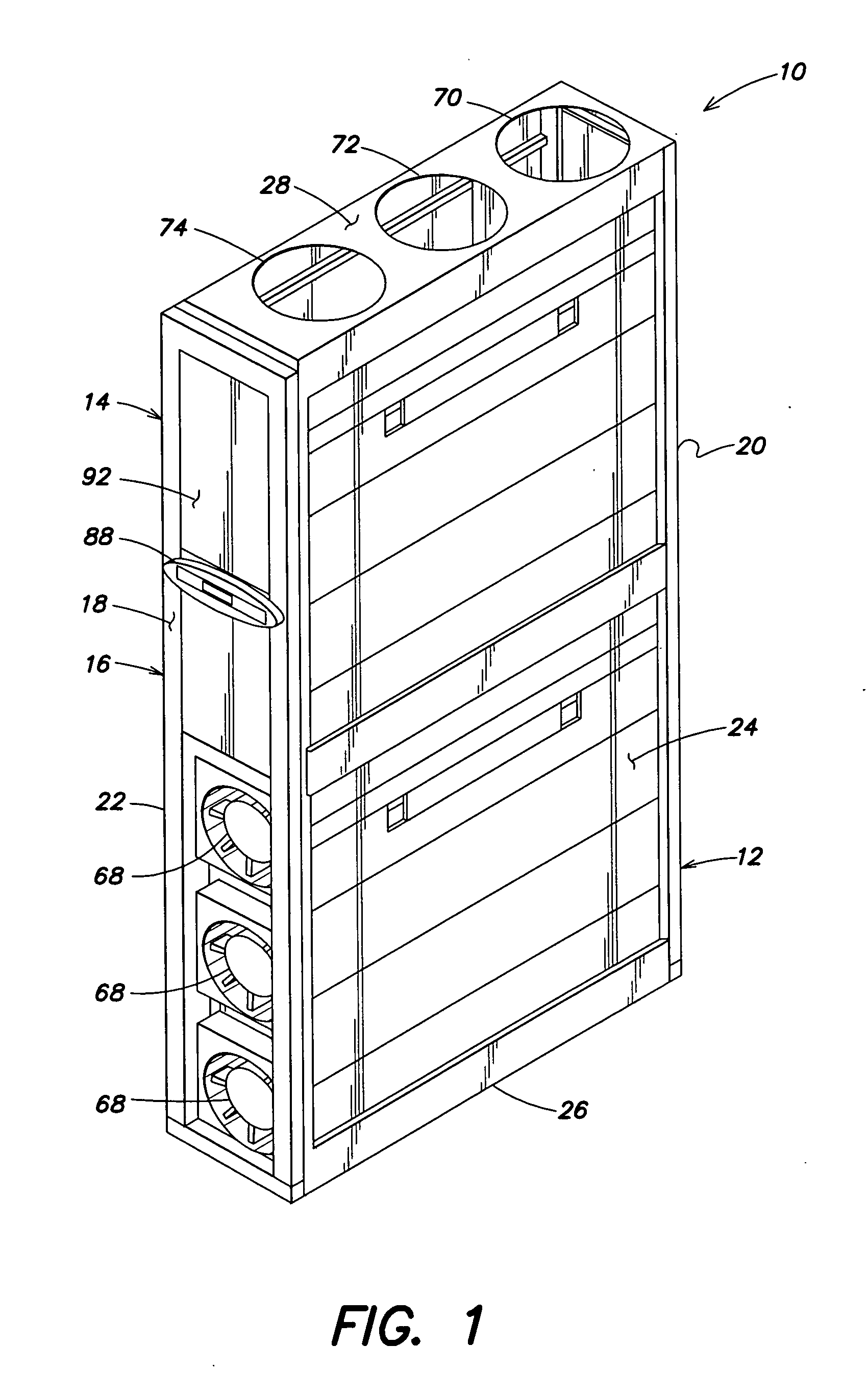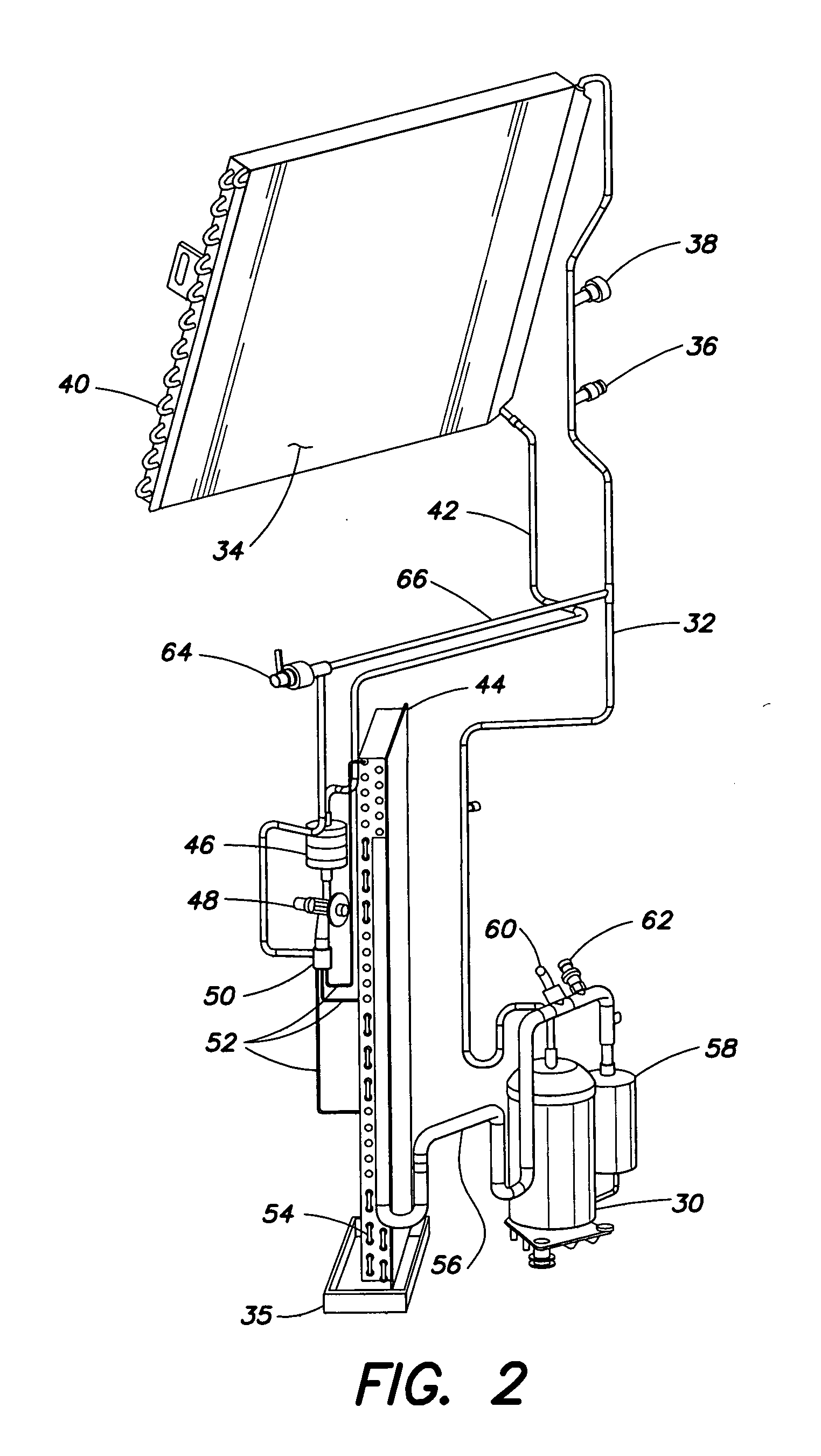Method and apparatus for cooling
- Summary
- Abstract
- Description
- Claims
- Application Information
AI Technical Summary
Benefits of technology
Problems solved by technology
Method used
Image
Examples
example
[0120]Using polynomial equation (7), which employs ARI-540 polynomial equation (8), the capacity of a cooling unit may be calculated as follows. Equation (8) is employed, assuming the following coefficients for a cooling unit using a 60 Hz compressor:
Compressor CoolingCoefficientCapacityC12.206E+04C23.403E+02C3−2.265E+02C44.067E+00C5−8.068E−01C61.352E+00C71.309E−02C8−1.900E−02C9−2.813E−03 C10−3.881E−03
[0121]The following estimated values for fan power, condensate production rate and compressor heat loss may be assumed:
[0122]Pf—300 Watts;
[0123]CR—1.6 pounds / hour; and
[0124]Qcomp loss—150 Watts.
[0125]And finally, the following test measurements may be employed for determining the coolant suction and discharge dew point temperatures:
[0126]Evaporating Pressure—136 psig;
[0127]Discharge Pressure—438 psig;
[0128]Suction Dew Point Temperature—47.1° F.; and
[0129]Discharge Dew Point Temperature—123.9° F.
[0130]Based on the foregoing, cooling capacity is calculated as follows:
[0131]Qcomp=6393 Wat...
PUM
 Login to View More
Login to View More Abstract
Description
Claims
Application Information
 Login to View More
Login to View More - R&D
- Intellectual Property
- Life Sciences
- Materials
- Tech Scout
- Unparalleled Data Quality
- Higher Quality Content
- 60% Fewer Hallucinations
Browse by: Latest US Patents, China's latest patents, Technical Efficacy Thesaurus, Application Domain, Technology Topic, Popular Technical Reports.
© 2025 PatSnap. All rights reserved.Legal|Privacy policy|Modern Slavery Act Transparency Statement|Sitemap|About US| Contact US: help@patsnap.com



